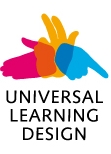Paper details
Accessible Video as a Support for Teaching in Higher Education
Mireia Ribera
Toni Granollers
Marina Salse
Bruno Splendiani
Jordi Coiduras
Xavier Carrera
Miquel Centelles
Victor Gil
Marta Oliva
Montserrat Sendín
Roberto García
Josep Ma Ribó
Rosa Ma Gil
Afra Pascua
Juan Manuel Gimeno
Abstract |
Accessible Video as a support for teaching in higher education
This paper presents a joint project of the University of Lleida (UdL) (Spain) and University of Barcelona (UB) (Spain) for the development of a specific programme dedicated to define, exemplify and promote the process of usable and accessible video creation and editing in higher education. The main aim of the project is to disseminate best practices through examples tested by a pilot study in order to facilitate the introduction of accessible video as a learning support for on-site courses and blended courses. The project is mainly focused on the application of Universal Design and Accessibility concepts in the use of audio-visual resources in higher education. This aspect has been little studied in comparison to other aspects concerning the educational use of video in the classroom (Dale, 1969; Bruner, 1997; Ferrés 1997; Sancho, 1994). The rationale of the project is based on the assumption that video is a format increasingly used in communication by Web (Maaden 2007, Purcell 2010; Moore 2011) and many universities systematically record classes and redistribute video for web and mobile platforms. Distance learning or blended universities record teaching content in video format in order to recreate part of the “richness” usually offered in the classroom learning experience.
According to ethical principles of education and the Declaration Of Human Rights, which states that "everyone has the right to education" and “higher education shall be equally accessible to all”, higher education should be accessible to everyone and should avoid creating new digital barriers. Unfortunately accessibility subjects have been seldom discussed in the literature related to teaching and their inclusion in audiovisual content offered in university courses is currently very low. It is very common to come across videos hard to access because of the lack of subtitles, for being offered with a video player not supporting accessibility features, or other mistakes caused by the lack of knowledge of better options.
Therefore, taking into account the current trend where the universities invest increasingly efforts to provide their expertise in video format (enabling a large number of students to access higher education), this project will increase the freedom of using specific lessons by video in the classroom or anytime and anywhere and will thus increase the teaching quality for students in general and for students with special needs in particular.
The project has been performed by a multidisciplinary group of academics (pedagogues, librarians and computer and multimedia technicians) and generated many outputs. The technology and knowledge transfer is one of the main purposes of the project and the nature predominantly applied of the project has fostered the creation of several products and demonstration readily available to the educational community. These materials gather information about different key issues to consider in designing materials, different useful tools are recommended to make the user capable to create accessible audiovisual content autonomously with basic skills or to add accessible features to
an existing video in the most common formats. The project briefly reports possible barriers to universal access on common platform and recommends the most affordable publishing options to guarantee the accessibility to the content.
The following list shows the generated outputs of the project:
All the outputs will be available soon on the project’s website (http://
References
AFRA, P., RIBERA, M., MASIP, L., GRANOLLERS, T., LÓPEZ, J. Guías de
contenido digital accesible. In 25 Años de Integración Escolar en España: Tecnología e
Inclusión en el ámbito educativo, laboral y comunitario. Región de Murcia. Consejería
de Educación, Formación y Empleo. Secretaría General. Servicio de Publicaciones y
Estadística, Spain, 2010. ISBN 978-84-693-1781-5.
GONZÁLEZ, M., MORENO, L., MARTÍNEZ, P., IGLESIAS A. Requisitos de
accesibilidad web en los reproductores multimedia. In Proceedings of the XII Congreso
Internacional Interacción 2011, Lisboa. N. Garay, J. Abascal (Eds.),2011. ISBN: 978-
84-9281-234-9.
KATHLEEN, Moore. 71% of online adults now use video sharing sites Washington.
Pew Internet [online]. 2011. Available in URL:
Video sharing sites.aspx>.
MADDEN M.. Online Video Washington. Pew Internet [online]. 2007.
Available
in
URL:
http://pewinternet.org/~/media//Files/Reports/2007/
PIP_Online_Video_2007.pdf.pdf.
MORENO Lourdes.; RUIZ-MEZCUA, Belén; MARTINEZ, Paloma; CARRERO, Juan
Manuel and MARTINEZ, Juan Ramón. Accesibilidad a los contenidos audiovisuales
en la web: una panorámica sobre legislación, tecnologías y estándares. Madrid: Centro
Español de Documentación sobre Discapacidad, Spain 2008. ISBN 978-84-691-7754-9.
PURCELL, K. The State of Online Video Washington: Pew Internet [online]. 2010.
Available in URL: http://pewinternet.org/Reports/2010/State-of-Online-Video.aspx.
RIBERA, M., PASCUAL, P., SALSE, M., MASIP, L., GRANOLLERS, T., LOPEZ
JM., OLIVA, M., GIL, R., GARCIA, R., GIMENO, JM., CHINÉ, J., COMAS A. 2010.
Guia de contingut digital accessible. ISBN: 978-84-693-8489-3. Available in URL:
http://griho.udl.cat/export/sites/Griho/documents/GuiesContingutAccessible/
Llibre_Guia_de_contingut_digital_accessible.pdf.
|
For the full paper and presentation material as well as the record of the presentation please sign in.









